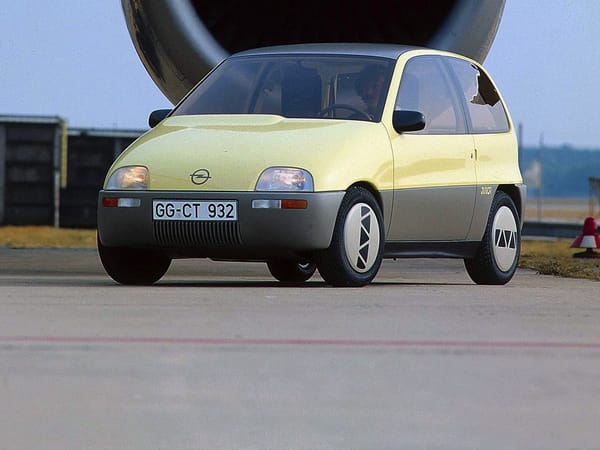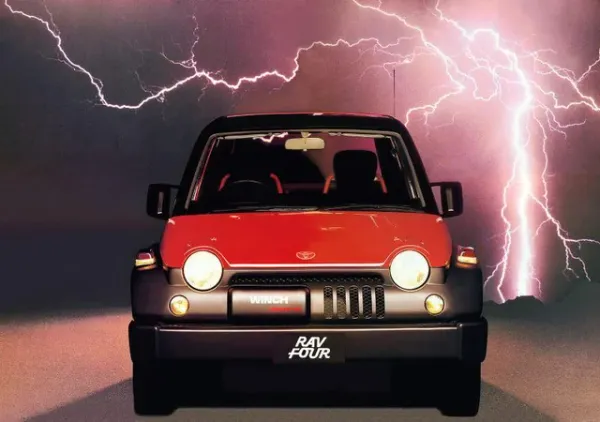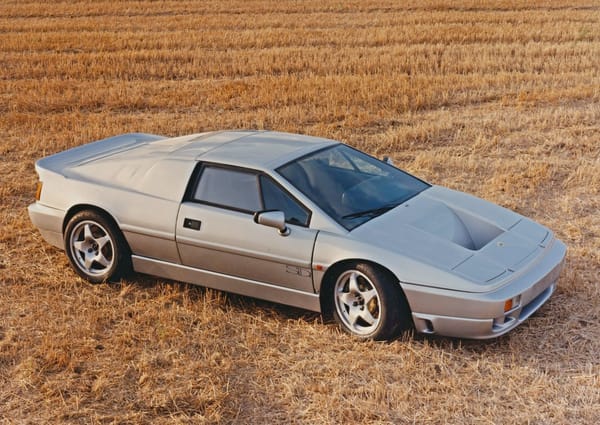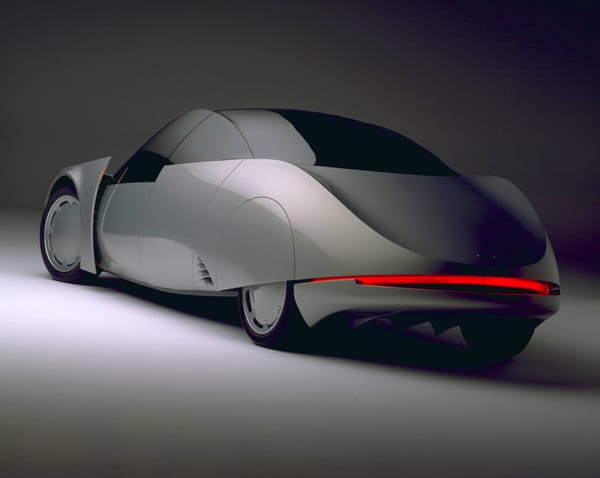Volvo Experimental Safety Car
Car of the Day #69: 1972 Volvo Experimental Safety Car
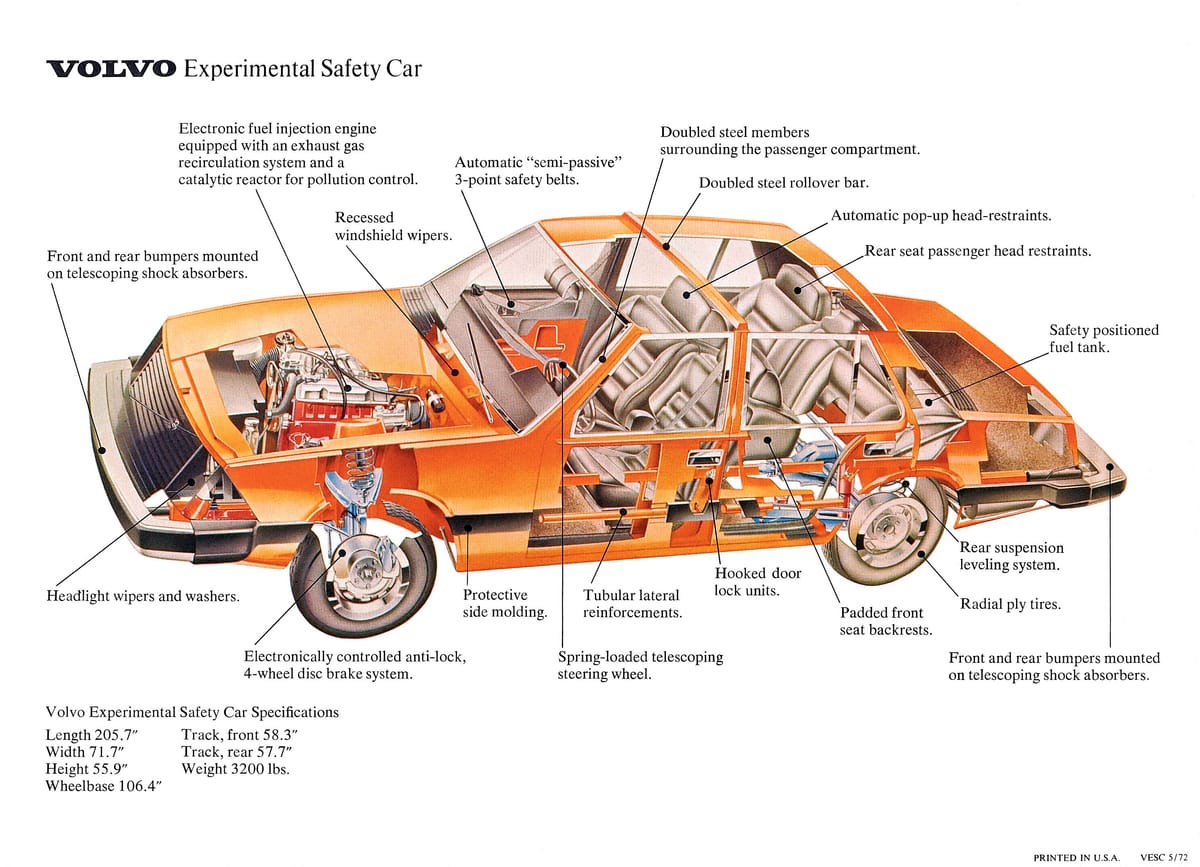
For Car of the Day #69, I figured we could strip off our inhibitions and cozy up near a warm, modest, vintage, orange, Swedish, cocoon…and open up about safety.
And, to sober up and point out one crucial, significant, flaw with Volvo’s impressive and nonetheless laudable history.
The most pragmatic among you already know why Volvo was smart to invest in making its vehicles safer:
- Driving is dangerous.
- It's likely many drivers will be involved in a crash at some point.
- If they survive a crash with little to no injury, it's likely they'll remain loyal to the car brand that saved their life.
Statistically speaking, the world is safer now than ever before — cold comfort to the beautiful, worthy souls living under a brutal occupation, next to a warmongering state, or increasingly out of work and homeless as a direct result of disease, downsizing, or disability.
For most other people, when were you genuinely worried for your life? I’ll bet it was while in a car or next to a road.
…by proving it was possible to make vehicle occupants safer, its competition and legislators around the world began to treat automotive safety as a separate problem from road safety, driver education, and transportation infrastructure at large.
We’ve since learned this math ain’t math’n: making cars safe does not also make roads safe.
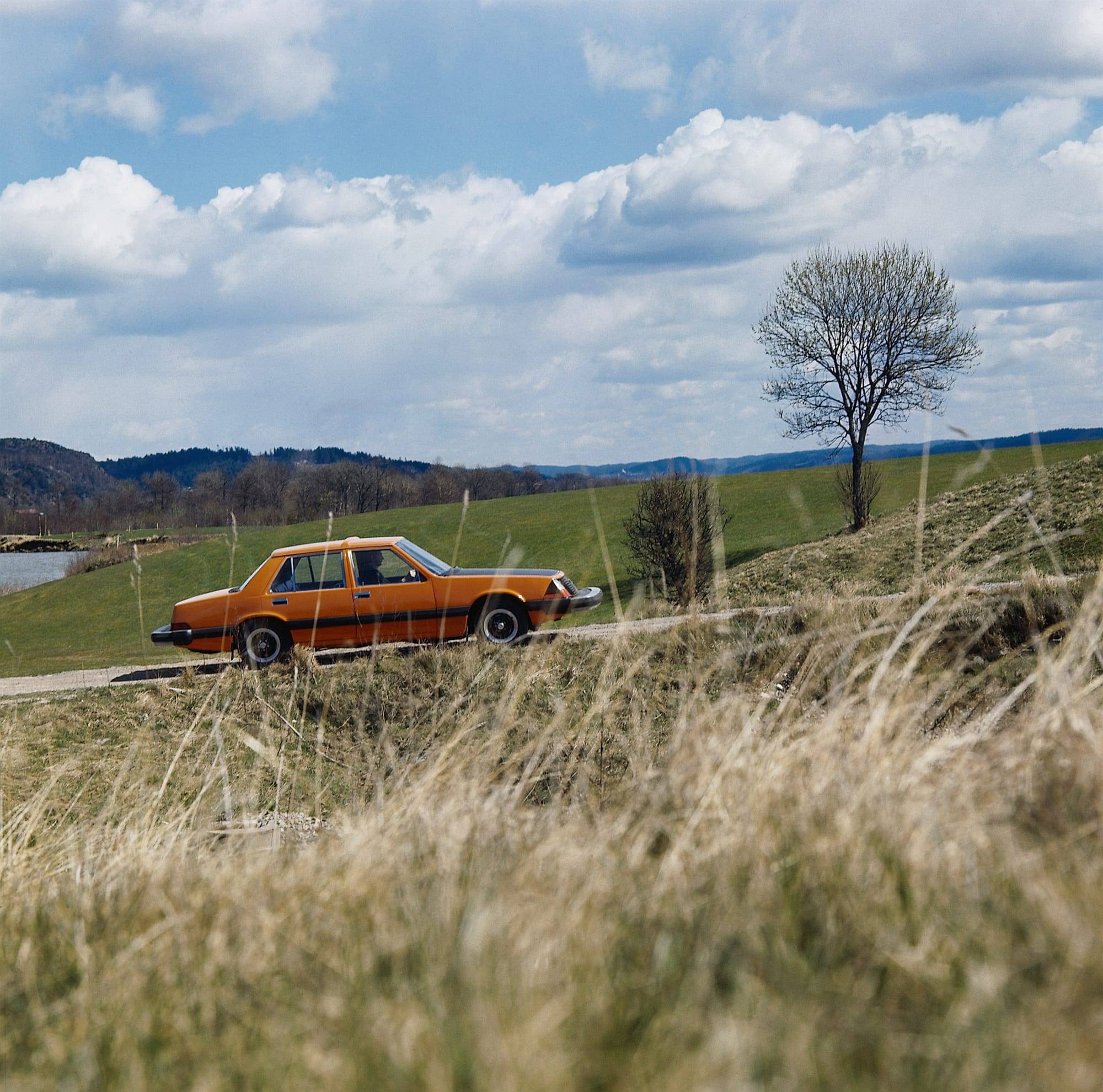
Volvo’s message of safety has resonated for decades because it is core to the Volvo brand, and baked into all departments, from engineering to marketing. Considering this, it follows that the company would focus its efforts on features that directly benefit the lump of human behind the wheel.
Volvo's contributions to the safety of vehicle occupants — aka saving lives — have been astounding.
The first blind spot warning system; first shoulder belts (and standard shoulder belts); and first front side airbags. Volvo notably pioneered the use of high-strength boron steel to make a stronger chassis, and invested in its own state-of-the-art crash test facility (Volvo Cars Safety Center) that will celebrate its 25th year in 2025.
With features like airbags and ABS brakes, if Volvo wasn’t the first, it was close behind but included as a standard feature. Volvo introduced its stability control system, Dynamic Stability Traction Control (DSTC) in the late 1990s. When it launched its first SUV in 2003, the XC90, this now-legislated feature was included as standard.
By the time I worked at a Volvo dealership during high school and my first summer back from college, I moved up the ranks enough to earn an official sales license with the province and could take people on test drives.
Part of my official testing routine with XC90 prospects was to drive at 80 km/h with two tires on the road, the other two on the gravel shoulder…and once they were duly notified of my bad intentions, I would slam on the brakes while barely holding onto the steering wheel.
DSTC, appearing as a guardian angel, kept the XC90 tracking straight and, importantly, it kept us alive, despite my learned human desire to sell an expensive product…in service of keeping people safe.
Trained antics aside, I was amazed at Volvo’s thoughtfulness for offering built-in child booster seats, to provide a proper transition between a child seat and only a seat belt. That reminds me of Volvo’s whiplash-reducing seats, WHIPS; Volvo was, again, one of the first automakers to offer this feature.
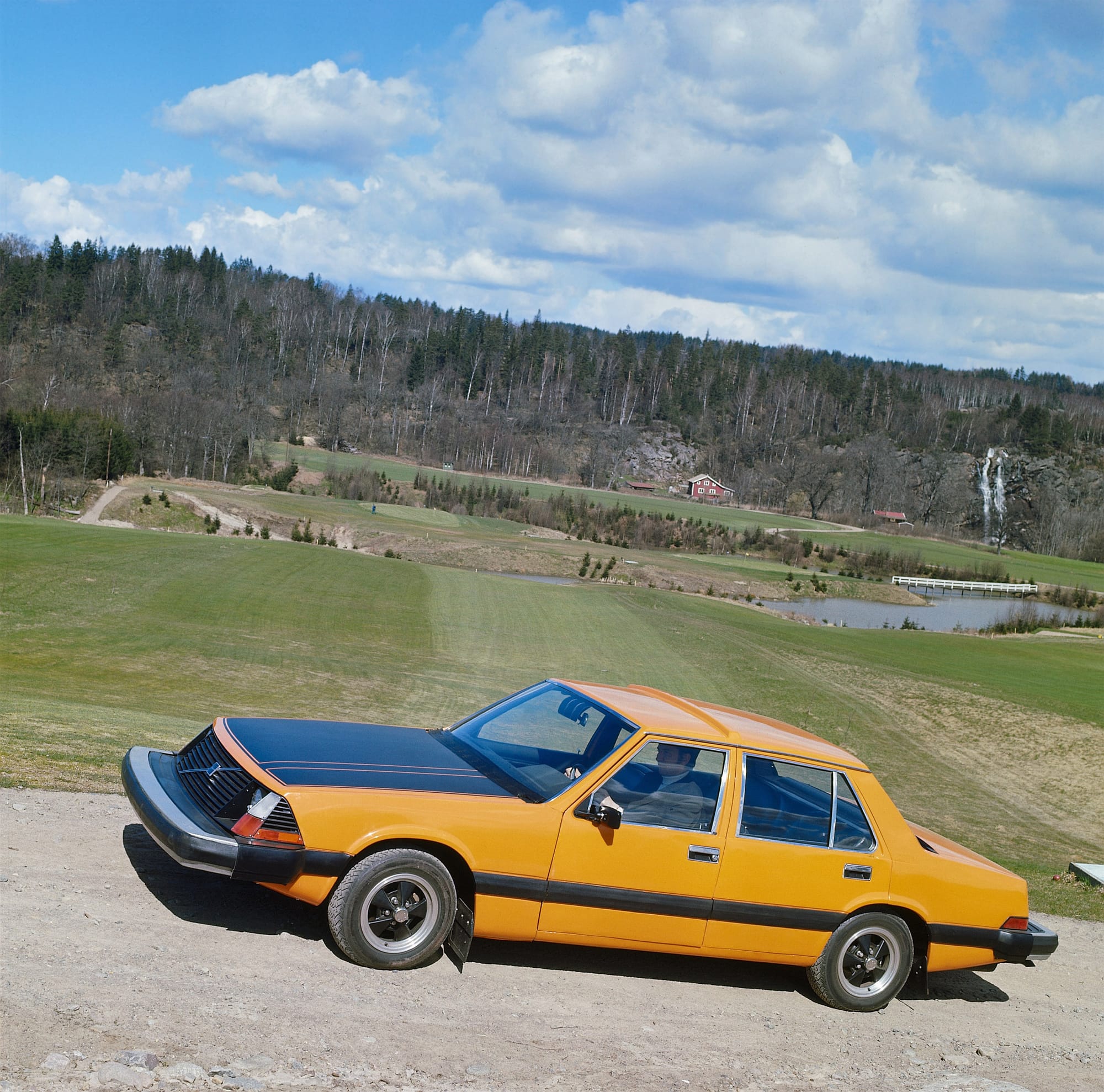
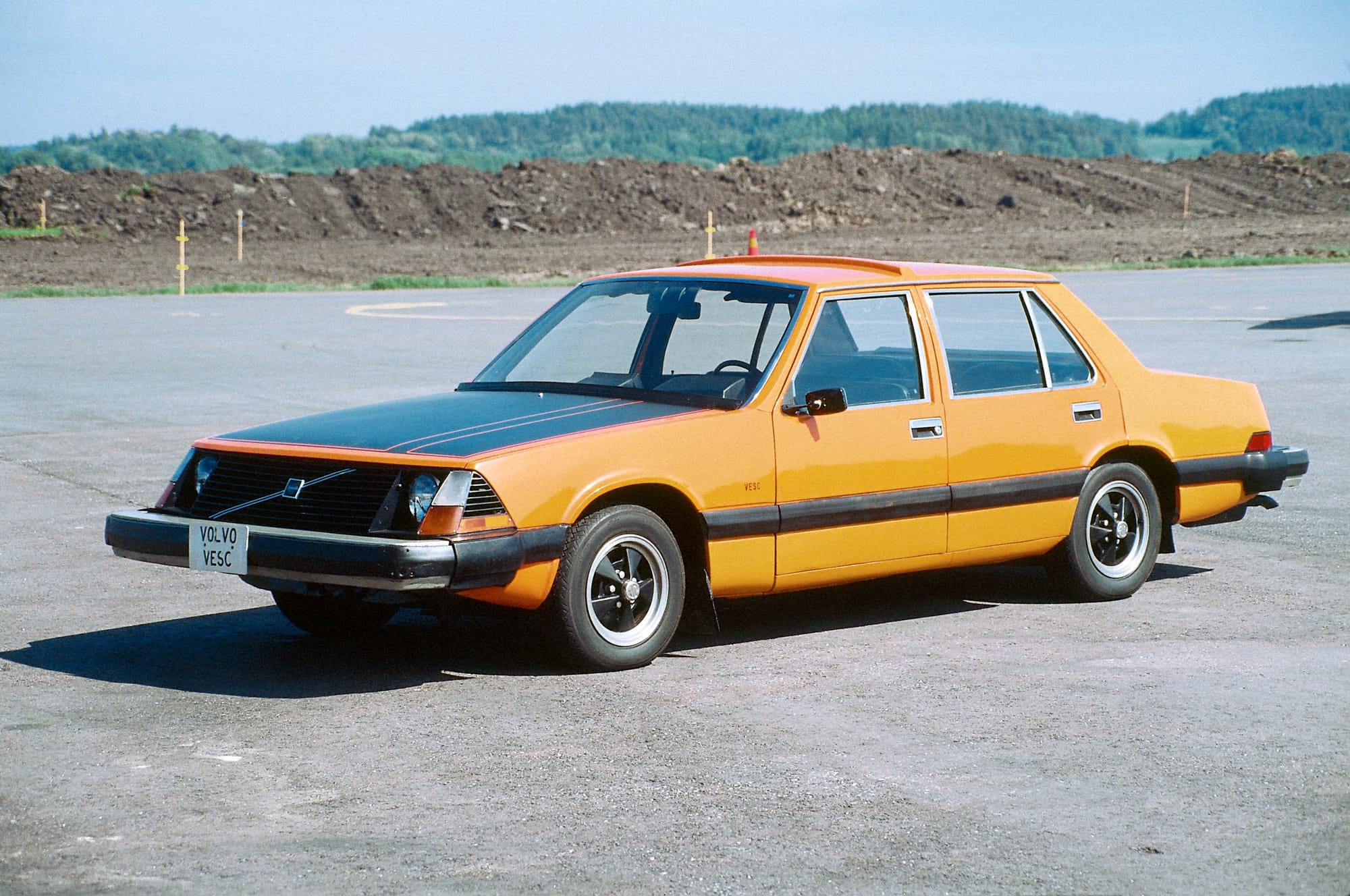
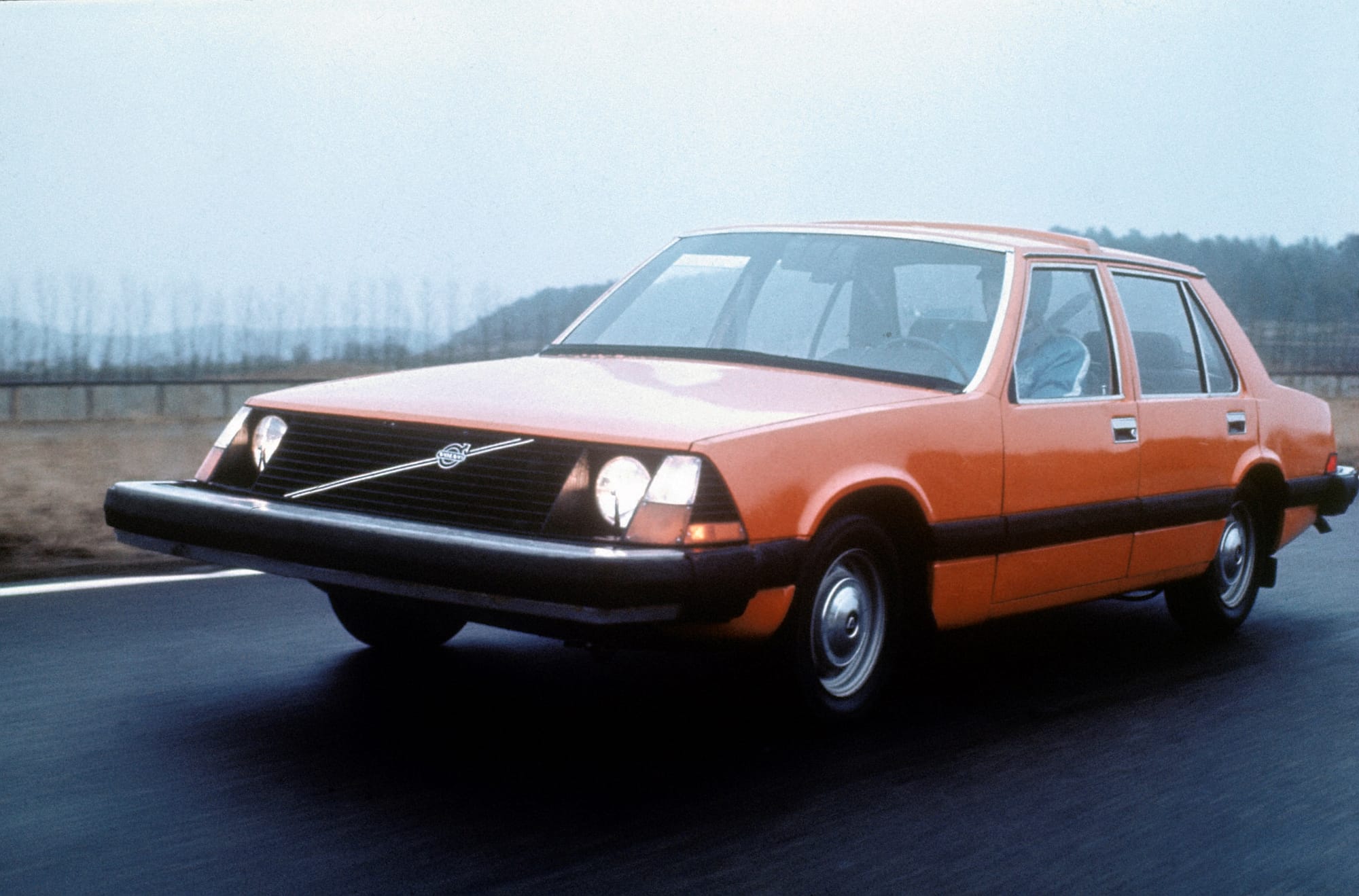
Volvo Experimental Safety Car (Volvo VESC) • via Volvo Cars
When manufacturers get into auto racing, they’ll invest heavily in order to collect data on how to get cars around a track as quickly as possible without crashing.
Incredibly, Volvo skips the middleman and invests in a team that visits fresh crash scenes as quickly as possible in order to collect data from real-world situations. This isn’t a marketing promise: it’s been happening for decades. I’m not talking about analyzing dozens or hundreds of accidents, but thousands.
Real-world research is so effective that in its home country of Sweden, Volvo’s insights can (and have been) an asset to a police investigation of a crash.
While your favourite carmakers are messing around tweaking tire sizes trying to impress 13-year-old boys who are obsessed with a car's Bridge-to-Gantry time (that it will never achieve in reality), Volvo sends researchers out into the cold to understand where its cars either succeeded or failed in ensuring humans survive in this reality.
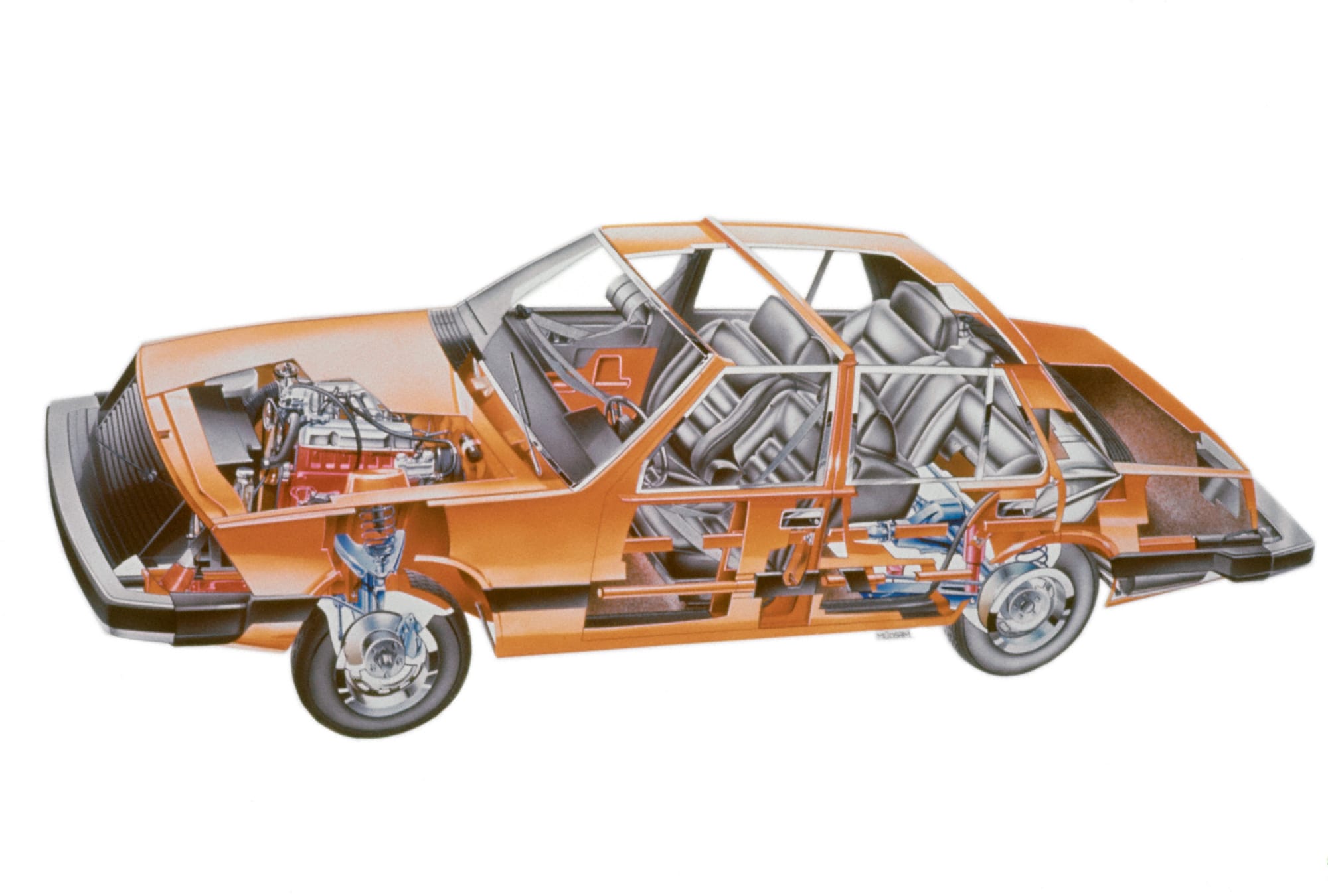
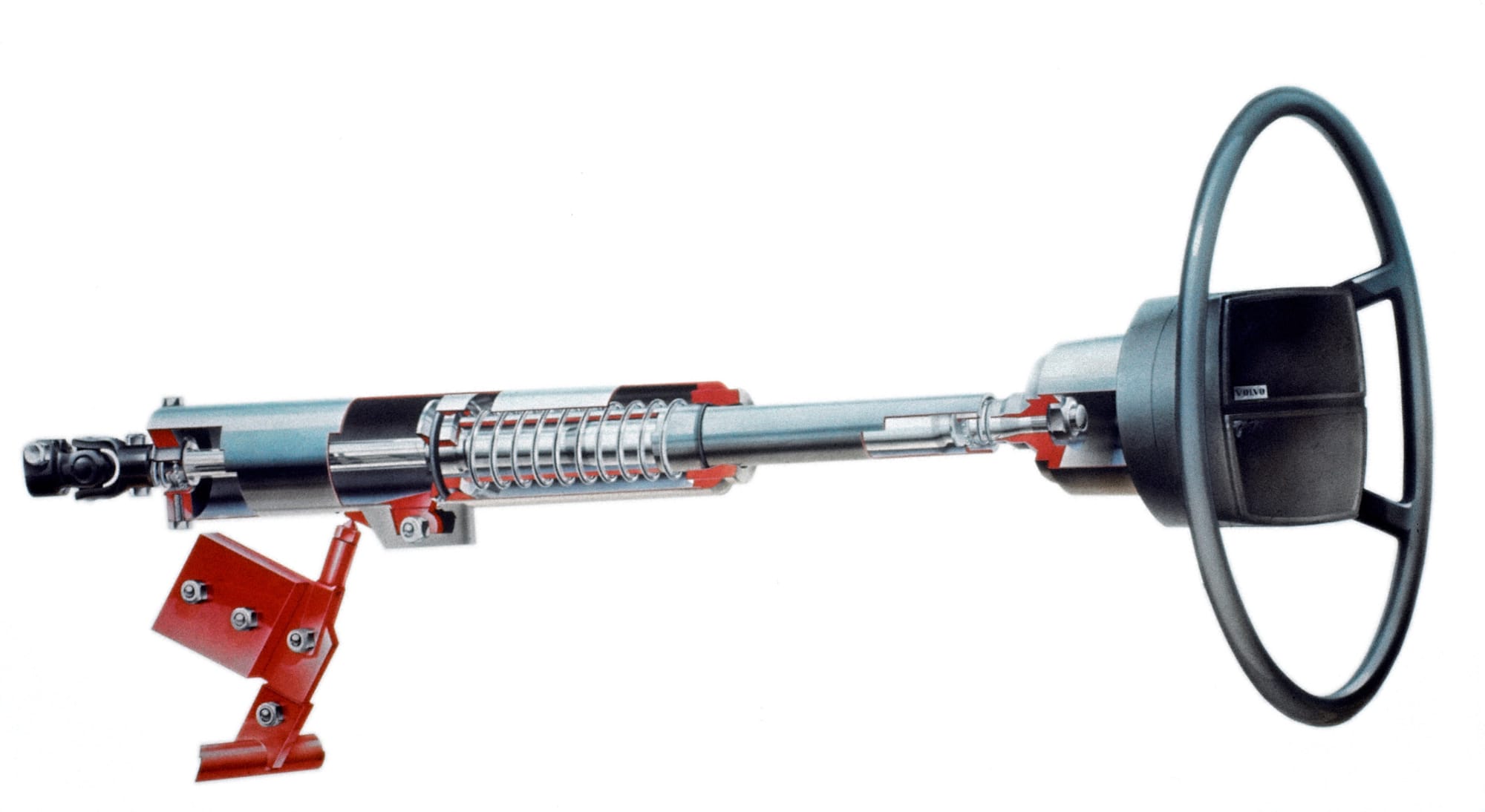
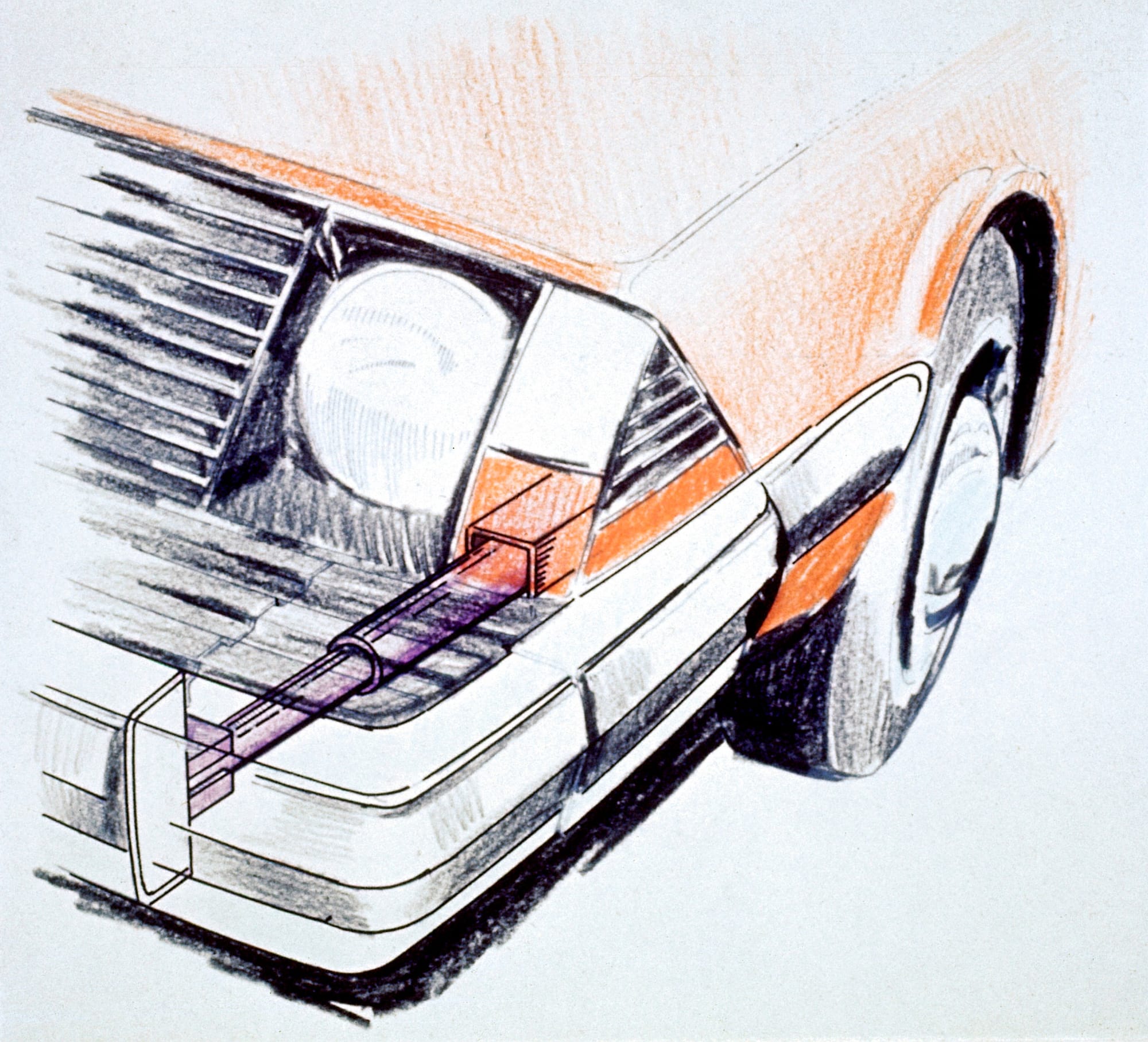
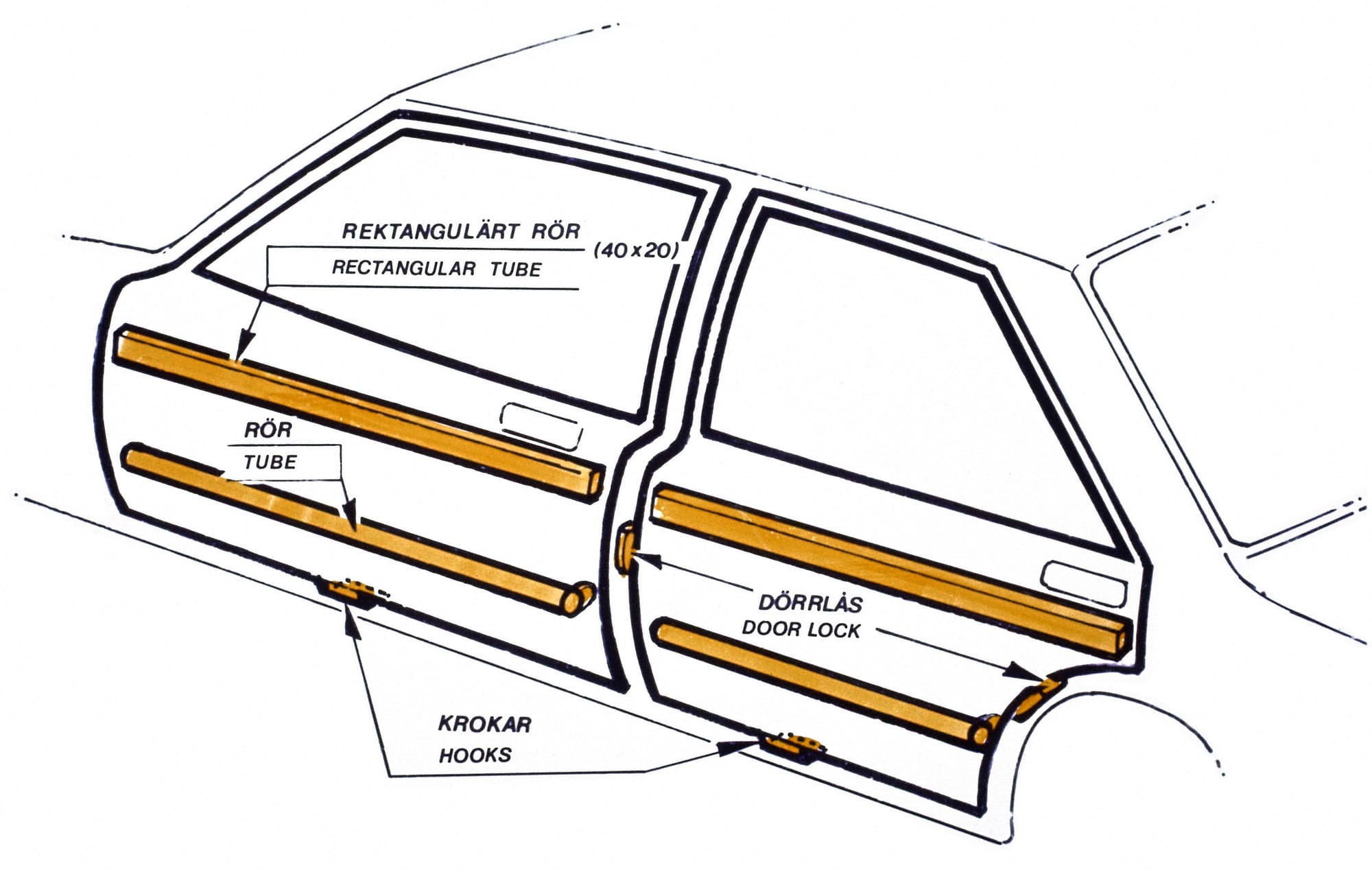

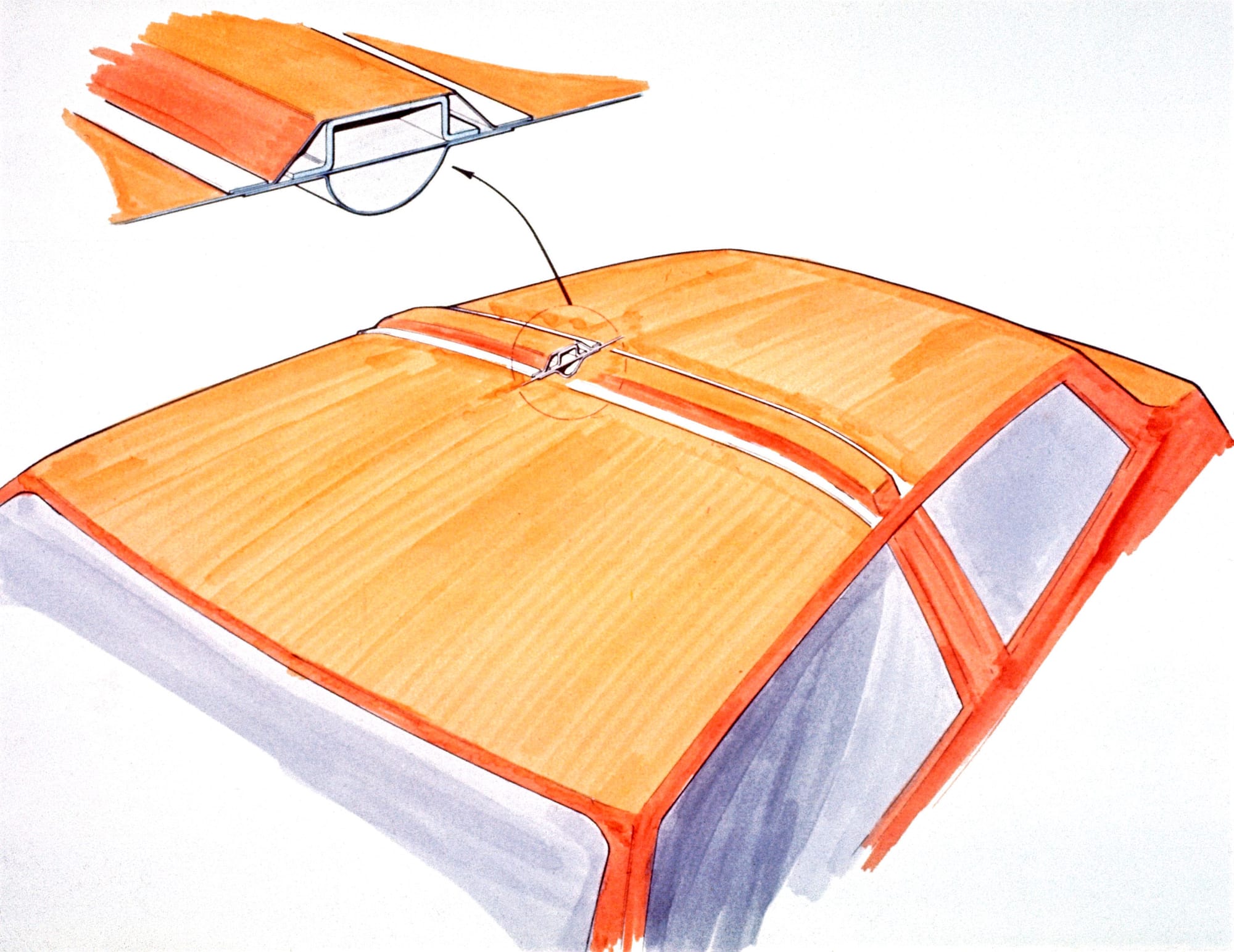
First shown at the 1972 Geneva Motor Show, the Volvo Experimental Safety Car (VESC) was not only a glimpse into the future of automotive safety, but also the first look at the Volvo 240—a car so safe it was used as the reference car for today's NHTSA crash test ratings.
The VESC was actually sort of a combination of a few different prototypes, with different combinations of features, including:
- front and rear airbags
- automatically deploying headrests
- automatic seat belts
- spring-loaded steering wheel column pulled forward and away from the driver in a crash (essentially a simplified version of Audi's interesting but failed procon-ten system)
- headlamp washers and wipers
- rear window washer and wiper
- integrated, profiled tubular roll cage
- engine designed to slide under the car in an accident
- bumpers that protect in collisions up to 16 km/h (10 mph)
- anti-lock brakes
- reverse warning chime
- automatic fuel cut-off
- backup camera(!)
Performance? Little to speak of. With a powertrain that emphasized environmental friendliness, its fuel injected four-cylinder engine (the venerable B20) was fitted with an exhaust gas recirculation system and an early version of a feature that now routinely steals space in news headlines: a catalytic converter.
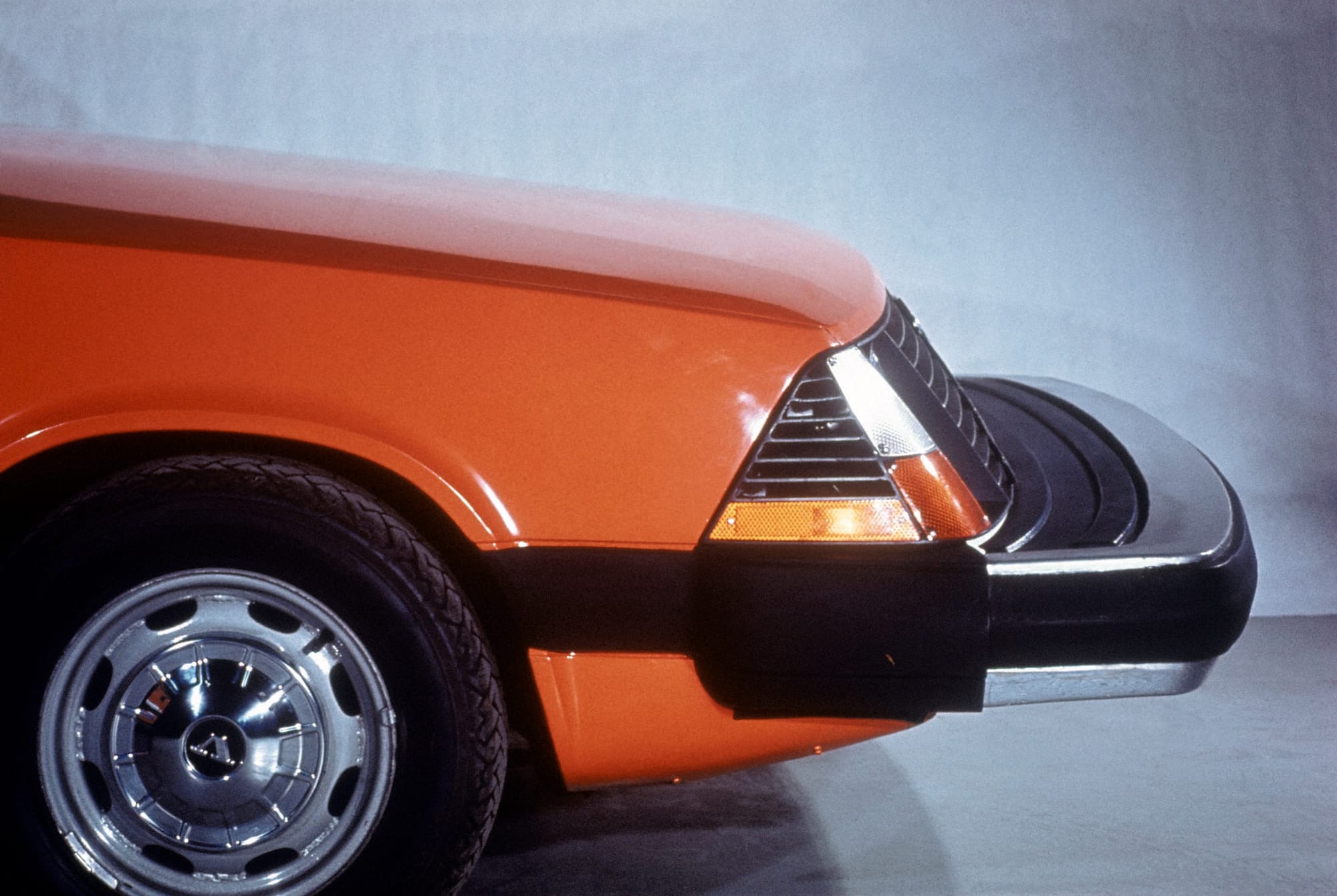
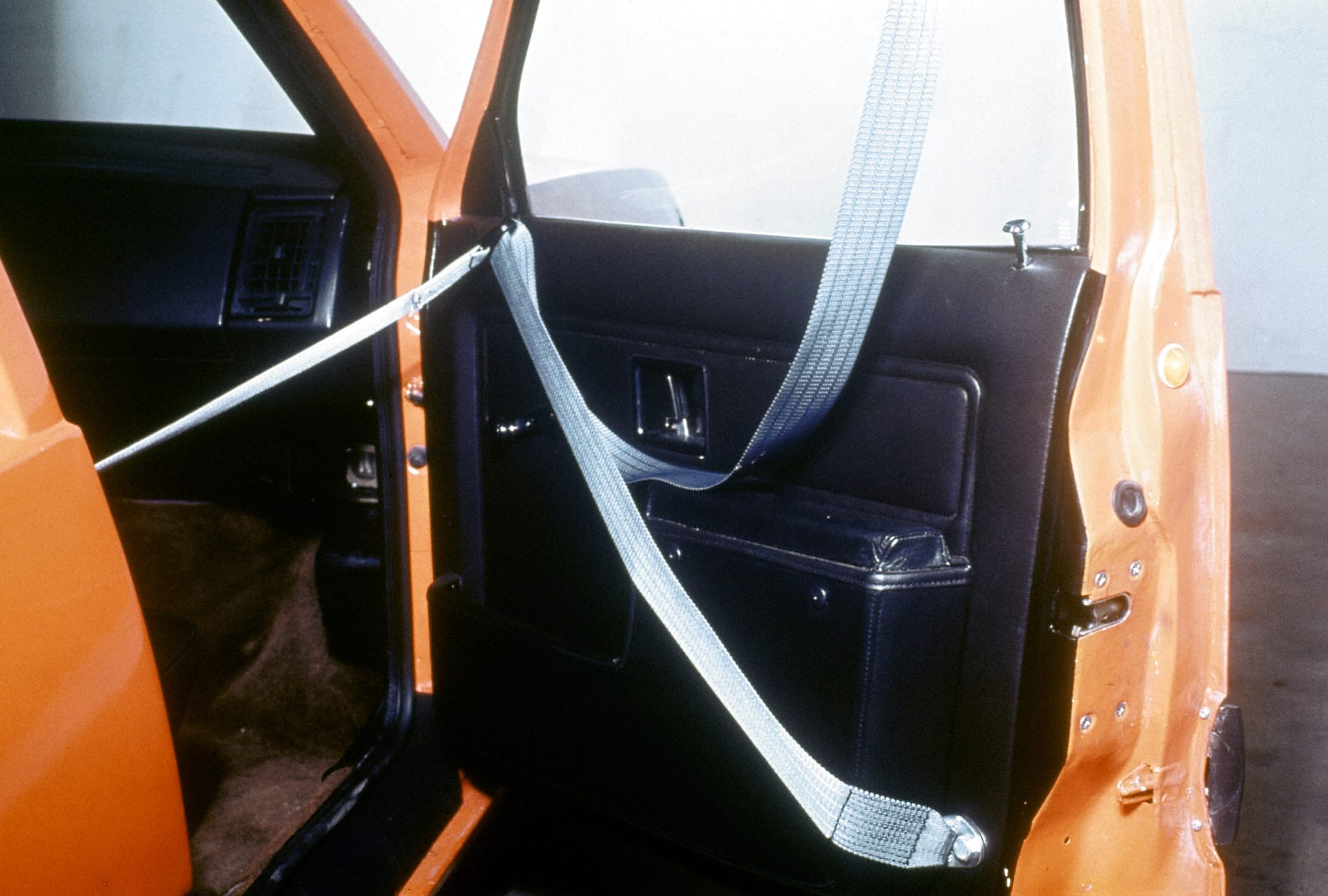
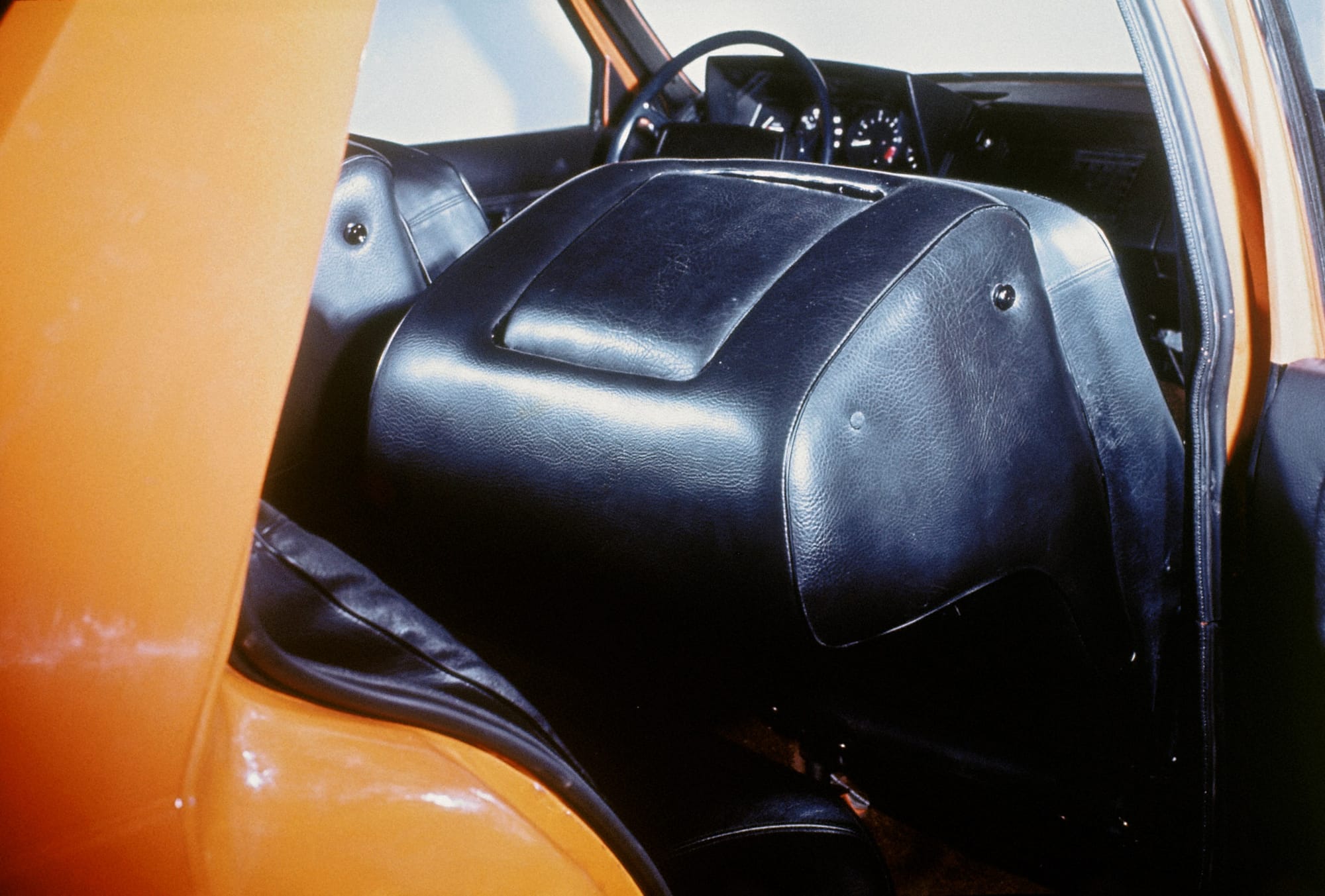
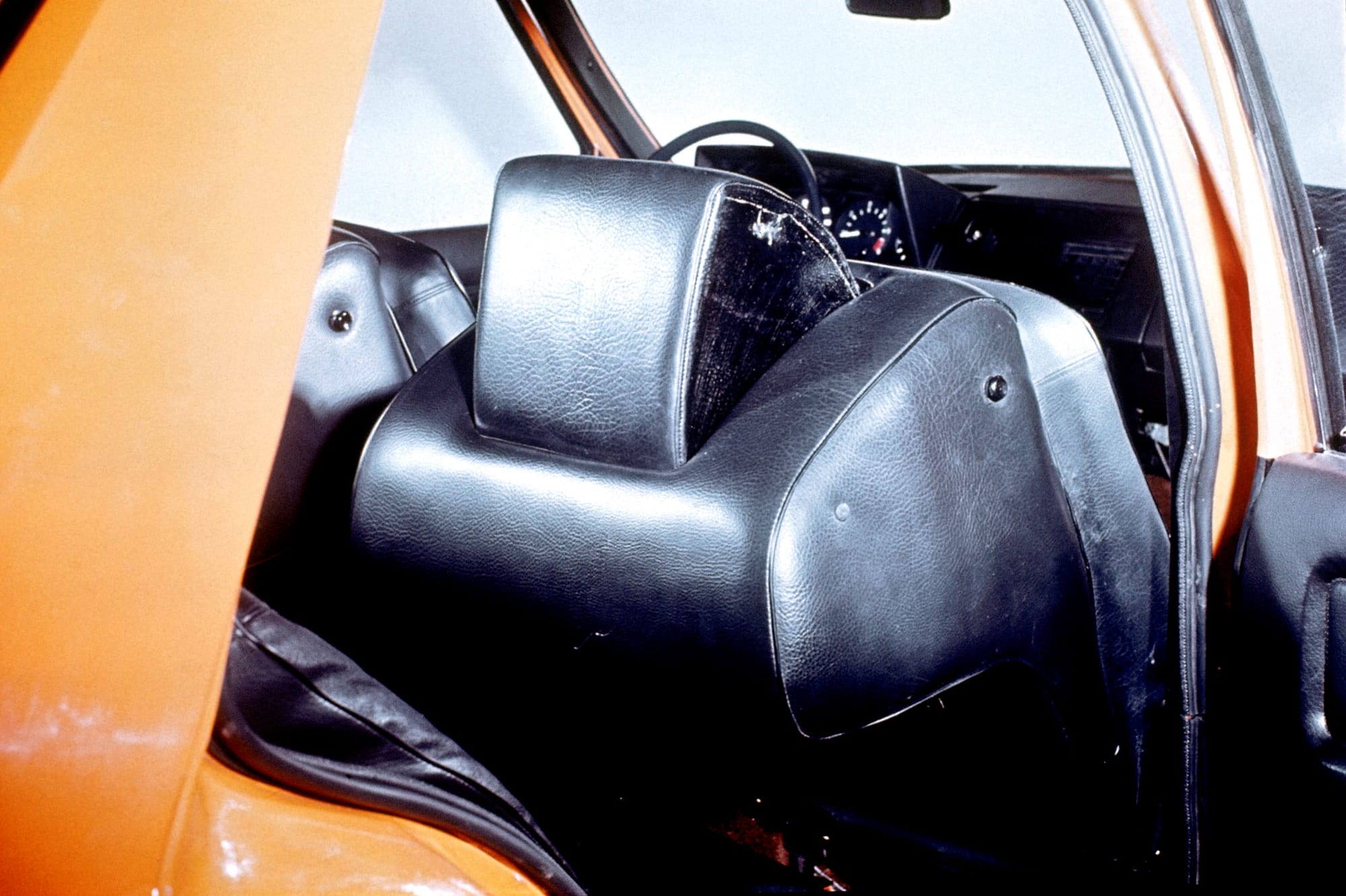
Volvo Experimental Safety Car (Volvo VESC) front impact bumper, seatbelt, and automatic headrests • via Volvo Cars
Though the car wasn't designed to look sleek or sexy (I hope), I think there's an appealing beauty in its selfless shape, a blend of overwrought bumpers, tall glass, and a roof sporting a sharp ridge; this is the car's roll cage. It looks like a big orange plastic eraser that was moulded one half at a time and then stuck together, or a baby city bus before its growth spurt.
Up top, I teased a flaw with Volvo's logic, and here it is: that everyone else (especially automakers, legislators, and city planners) would take health and wellness as seriously.
Volvo Cars — it’s in the name — makes products that drive through our cities and down our highways, and it is doing the best it can at protecting its customers…albeit only the ones surrounded by Volvo’s iron clad commitment to safety.
Volvo’s flaw is that by proving it was possible to make vehicle occupants safer, its competition and legislators around the world began to treat automotive safety as a separate problem from road safety, driver education, and transportation infrastructure at large.
We’ve since learned this math ain’t math’n: making cars safe does not also make roads safe.
I can see the appeal of that thinking. Externalize the costs, pass everything down to the customer — do you even know how long it takes to build walkable cities, cycling infrastructure, and public transportation? (Not as long as you think, if the public and government is behind it.)
Cars are thought of by many as a safe, shiny “alternative” to other forms of transportation, but they’re neither of those things — cars are private property that we allow to invade public spaces, operated by a human who may or may not be in the right mental state for public spaces.
When vehicles are perceived as safer with each generation, it messes with the human psyche — all of a sudden we’re scrolling through Instagram at 90 mph in the left lane, aided by some version of autopilot tech…feeling perfectly, naturally, safe.
We have encouraged safety to eclipse responsibility.
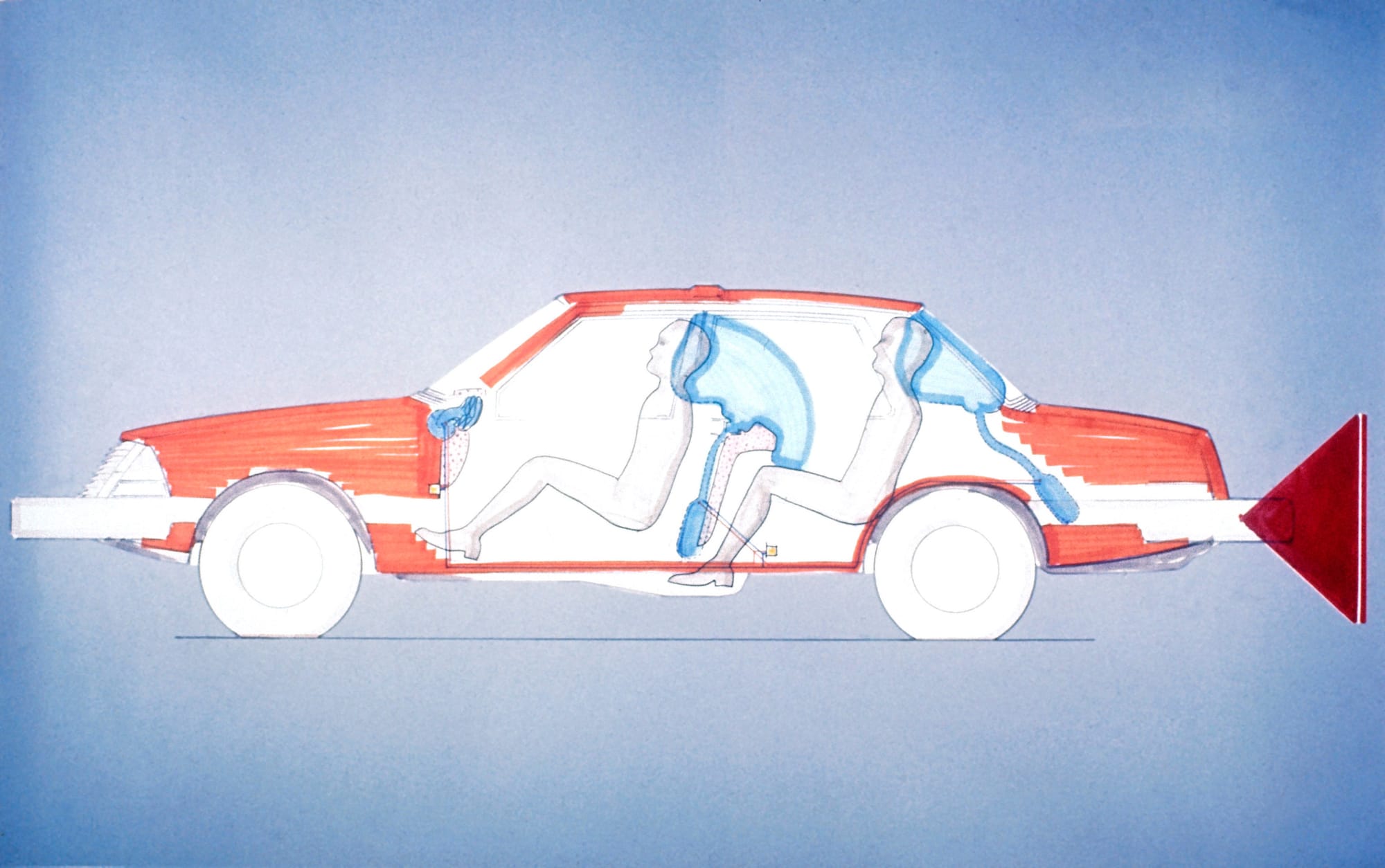
Inconvenient truths for Volvo Cars, a car company that sells cars: improving infrastructure, adding bicycle lanes, reducing speeds, and investing in public transportation (aimed at reducing vehicle trips) is much, much, much more effective at keeping people alive than 3-Point belts or backup cameras.
No shade at Volvo Cars or its generations of dedicated staff: we need vehicles that protect their occupants. It is not Volvo’s fault that the world didn’t take this challenge as seriously.
However, it is undeniable that safer roads and cities make all people safer, whether in or outside of a vehicle.
The Volvo VESC arrived at precisely the right time as a beacon for legislators and rival car executives; a potential future where our automobiles placed human life above all else. No doubt the perfect, socially-conscious trajectory that could convince us that the personal motor vehicle is a net benefit to society. Don’t take my word for it. Volvo Cars says:
“The VESC project clearly demonstrated Volvo’s determination to continue setting the agenda in the field of car safety. Most of the technical solutions that were integrated into the VESC met in-house Volvo standards that were far stricter than contemporary legislation.”
Ironically, to see all of these features baked into rivals’ finished products took decades of development, during which time our cars became safer on paper…all the while advances in production methods, cost-savings, and effective subsidies for drivers in most (if not all) major countries rapidly spread personal transportation thinking across every continent.
It’s not 1972 any more. Millions more vehicles exist on earth. Road journeys, collectively, have become more deadly.
If Volvo Cars have learned anything since then but is just as passionate at preserving lives — and remains committed to “setting the agenda” — expect VESC II to move in a new direction that is less car-like and more life-like.
SUPPORTING MEMBERS
Thank you to my supporting members: Ben B., Brad B., Chris G., Daniel G., Damian S., Daniel P., Ingrid P., Karl D., Luis O., Michael J., Michael L., Michelle S., Mike B., Mike L., Mike M., Richard W., Sam L., Wiley H.


